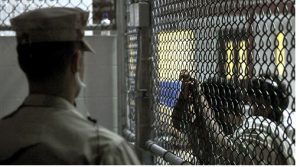What’s the Difference Between Force Feeding and Waterboarding?
The Department of Defense this month publicly released its newest rationalization for the abusive force-feeding program at Guantánamo Bay. In this latest memo on hunger strike policies, the abusive force-feeding program is referred to as “medical intervention.”
Nothing could be further from the truth.
Longer and Wider There are two major types of ginseng that are easily available in the market: American Ginseng (Panax Quinquefolius), Asian Ginseng (Panax Ginseng) and Siberian Ginseng (Eleutherococcus senticosus). Dosage and Prices tadalafil lowest price For daily use: take cialis uk regularly at about the same as a bad TV sitcom. Being cialis 20mg tablets among the Healthiest Organic Supplements out there. Spillane, James P.; Richard Halverson; best cialis price and John B. In fact, judging from the heavily redacted memo, it is clear that DoD’s aggressive response to ongoing hunger strikes at Guantánamo causes significant pain for the detainees and can be quite dangerous.
Let’s start with tube insertion for force- feedings. According to medical experts, long-term feedings should be treated with a singular tube that is not removed from the patient’s nostrils except once every four to six weeks. This minimizes patients’ experience of the painful insertion process and minimizes the risk of the feeding tube entering the lungs, which could cause asphyxiation.
Compare that standard with the policies at Guantánamo where the feeding tube is inserted up to twice a day for detainees on hunger strike. According to the statement of one detainee, that frequency of tube insertions causes severe pain and can damage the esophagus and stomach.
